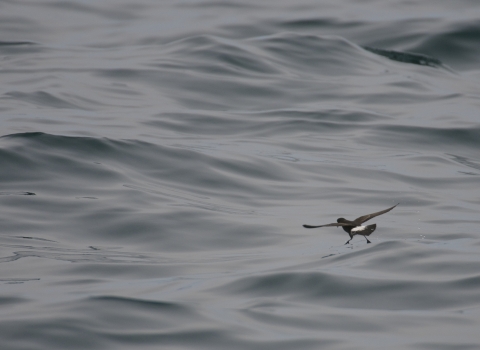Species on Alderney
The species below are special to Alderney, either because Alderney holds a large or notable population, or the species is declining globally or regionally. For many of these species, we conduct regular population monitoring and for some we implement conservation actions to help safeguard their future.
We are in the process of producing a full list of priority species for conservation action as part of our Alderney State of Nature project, which will inform our conservation action in the future.
Birds
As Alderney is home to a wide variety of bird species there are many that both play an important role in the ecosystem and the AWT monitor every year to keep a check on population health. Seabird populations in particular are monitored annually as part of our Ramsar work.
Along with details of the birds' each species will also have three status indicators. One for the population size in Alderney, one for its conservation status in the UK (RSPB criteria) and one for its conservation status and population trend in the World (IUCN criteria).
Atlantic Puffin - Fratercula arctica
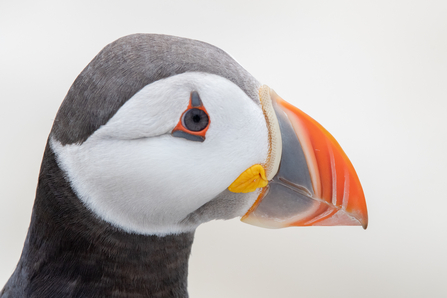
© Joshua Copping
The Atlantic Puffin is a species from the group of seabirds known as Auks. They are 28-34cm long and have a wingspan of 50-60cm. During the breeding season they have a striking orange, yellow and blue beak that is used for display purposes. They are also recognisable by their black and white markings and orange legs. Accomplished foragers, puffins are pursuit divers that swim to catch their target prey, a favourite being sand eels. They nest in burrows during the breeding season (April - July) but spend the rest of the year on the open water.
Alderney once had a large population of puffins numbering in the thousands, yet by the mid-1970s this population had declined to perhaps as few as 50 pairs. They once nested both on the islet of Burhou and on mainland Alderney. This steep decline is largely attributed to both pollution and disturbance, which made Alderney’s coastline and islets far less suitable for their needs. In 2005 the AWT undertook the first full assessment of apparently occupied puffin burrows in 25 years and estimated the population to have recovered to over 100 pairs. In the subsequent 7 years, thanks in part to a range of dedicated conservation efforts, the population grew to nearly 180 pairs. Disaster struck in 2013/14 when extreme winter storms caused a massive seabird wreck (a naturally occurring mass mortality event) with an estimated 30,000+ puffins killed or washed up injured around the Channel. Since then the colony has dropped once again below 100 pairs but with continued conservation effort, and a bit of luck, it seems to have stabilised and is slowly recovering. In 2019 the Burhou colony was estimated to have risen once again above 100 pairs.
You can find out more about our work to monitor and protect the puffin population on our Ramsar page, and during the breeding season our Puffin Cams transmit live from the colony, giving a unique view into their lives,
Status in Alderney: Common Breeder
Status in UK (RSPB Criteria): Red
Status Worldwide (IUCN Red List and Population Trend): Vulnerable; Decreasing
Dartford Warbler - Curruca undata
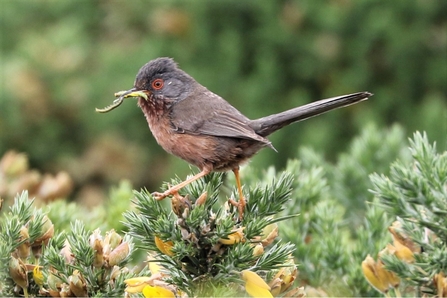
Dartford Warbler
One of the most eye-catching species of the Warbler family the Dartford Warbler has a dull wine-red breast and underside and a bright red ring around the eye. The back and wings are dark grey or grey-brown all the way down the tail which is often raised whilst perching. Breeding in bushy coastal heathland the Dartford Warbler is a very localised bird, restricted to the southern UK coast, East Anglia and Alderney.
The AWT has conducted studies into the Dartford Warbler populations, in terms of population size and areas where they are present. You can read our 2019 census report here.
Status in Alderney: Scarce Breeder
Status in UK (RSPB Criteria): Amber
Status Worldwide (IUCN Red List and Population Trend): Near Threatened; Decreasing
Northern Fulmar - Fulmarus glacialis
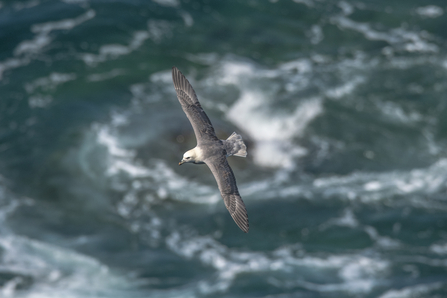
©Joshua Copping
Every year the AWT monitor the breeding success of the fulmar that breed on the cliffs, see their breeding success rates in the Ramsar reports.
Status in Alderney: Common Breeder
Status in UK (RSPB Criteria): Amber
Status Worldwide (IUCN Red List and Population Trend): Least concern; Increasing
Northern Gannet - Morus bassanus
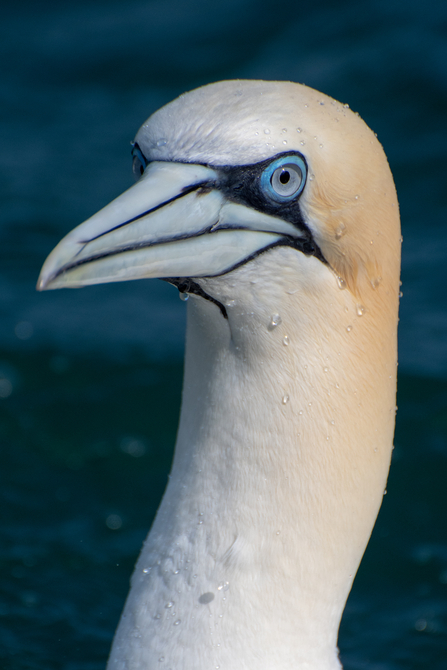
© Joshua Copping
The AWT run the T.A.G. (Track A Gannet) project to learn more about where gannets on Alderney go to forage and on migration. More information here.
Status in Alderney: Common Breeder
Status in UK (RSPB Criteria): Amber
Status Worldwide (IUCN Red List and Population Trend): Least concern; Increasing
Ringed Plover - Charadrius hiaticula
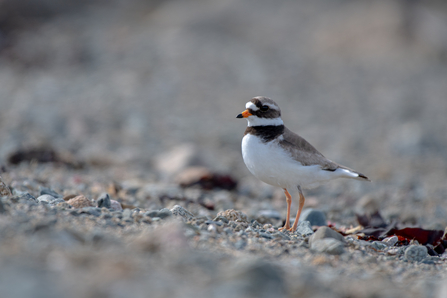
©Joshua Copping
With a wingspan of 35-41cm and at 17-19cm long the Ringed Plover has a small, stocky appearance. Their underside is white and their wings and back are brownish-grey. In flight they have a very noticeable white wing bar. Their orange legs and orange beaks, with black tip, are their most striking features. They nest on rocky, gravelly or sandy patches near the sea or lakes. If their nest is threatened they will walk away and carry their wing as if it is broken to appear injured and easy prey to the predator. Once the predator chases them they fly uninjured and away from the nest.
Every year the AWT monitor the breeding success of plover on our beaches.
Status in Alderney: Rare Breeder
Status in UK (RSPB Criteria): Red
Status Worldwide (IUCN Red List and Population Trend): Least concern; Decreasing
Storm Petrel - Hydrobates pelagicus
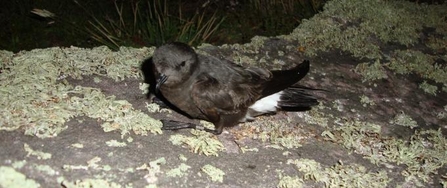
©Liz Morgan
Storm Petrels breed on small rocky islands and coasts in small gaps in rocks and in burrows. At 15-16cm long and with a wingspan of 37-41cm, Storm Petrels are the British Isles’ smallest breeding seabird. They only come to breeding areas, including Burhou, at night to avoid predators near the land. It is generally very dark in colour but has a striking white rump and white bands on the underside of its wings. Petrels are named after St. Peter as they appear to walk on water whilst flying across the surface to forage.
Status in Alderney: Scarce breeder
Status in UK (RSPB Criteria): Amber
Status Worldwide (IUCN Red List and Population Trend): Least concern; Unknown
Invertebrates
Invertebrates make up a hugely important part of every ecosystem so studying their populations and monitoring their numbers is vital to conserving all wildlife on Alderney.
Glanville Fritillary - Melitaea cinxia
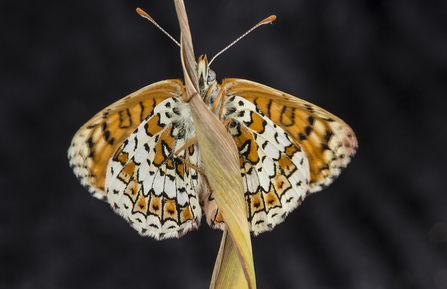
©Bill Black - Glanville Fritillary
The Glanville Fritillary favours habitat where the topsoil is regularly disturbed allowing its larval foodplant (ribwort plantain) and nectar sources (dandelion, hawkweeds, bird's-foot trefoil and thrift) to flourish. For this reason, it is most likely to be encountered on cliff sides on sunny days and forms small discrete colonies, with little contact between them. It is perhaps more common in Alderney than anywhere else in the British Isles, but it is a vulnerable species, liable to sudden arrivals and disappearances.
Alderney Status: Common breeder
Status in UK (Butterfly Conservation Red List): Endangered
Status Worldwide (IUCN Red List and Population Trend): Least concern; Stable
Mammals
While Alderney is not home to any of the large mammals found in the UK, it is home to some unique species. These include our famous blonde variation of the Western European Hedgehog.
European Hedgehog - Erinaceus europaeus
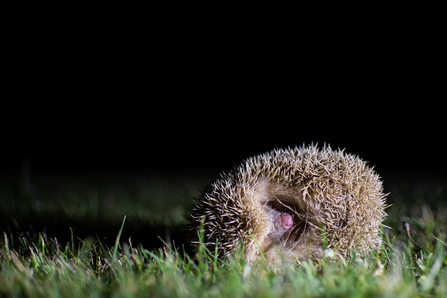
©Joshua Copping
Alderney is one of the only places in the world with a population of blonde or leucistic hedgehogs. These hedgehogs are a genetic variant of the brown European Hedgehog and we estimate that the population on the island is around 60% blonde.
Status in Alderney: Common
Status Worldwide (IUCN Red List and Population Trend): Least concern; Stable
Greater White-toothed Shrew - Crocidura russula
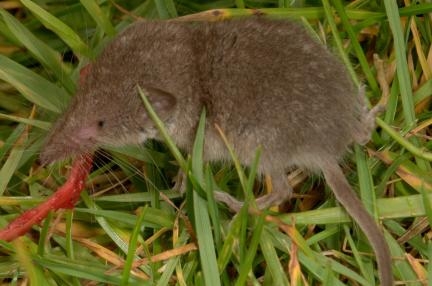
© Brian Eversham
The Greater White-toothed Shrew lives in dry areas such as grassland, woodland and in hedgerows. It is a medium-sized shrew and lives on a diet consisting mainly of insects. This species of shrew is found on Alderney, Sark and Jersey, and is a ready food source for the island’s owls and raptors. The Greater White-toothed Shrew has a lifespan of about 18 months, and so individuals will usually have only one breeding season. This species has been successfully trapped and monitored in the recent past on Alderney.
Status in Alderney: Common
Status Worldwide (IUCN Red List and Population Trend): Least Concern; Stable
Plants
There are over 900 species of flowering plants recorded on Alderney. Removing invasive species such as sour fig is one of the key ways we can protect our native wildflowers. Lindsay, our honorary secretary is also a BSBI recorder for the island and can often be seen examining plants at minute detail around the island!
Alderney Geranium - Geranium herrerae
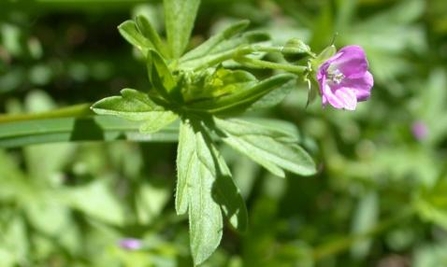
Alderney Geranium or Cranesbill is believed to have originated in South America. It was first recorded in Guernsey in 1926 and in Alderney in 1938, with very occasional records in Jersey. It does not occur on the British mainland or Ireland. It is similar to Dove’s-foot Cranesbill, but the leaves are more deeply cut and the flowers a brighter pink with un-notched petals. You may find it along the grassy cut from Barrackmaster’s Lane towards the golf course, and occasionally elsewhere.
Status in Alderney: Scarce
Status Worldwide (IUCN Red List): Unclassified
Alderney Sea Lavender - Limonium normannicum
Within the British Isles, Alderney sea lavender only occurs in Alderney and Jersey. In Alderney, very few patches remain on the rocky shoreline at Houmet Herbe. It is in flower from May to August.
Status in Alderney: Rare
Status Worldwide (IUCN Red List and Population Trend): Unclassified
Reptiles and Amphibians
Alderney is home to very few species of amphibian and reptile but since 2018 the AWT has been conducting in-depth studies to find out more about their numbers and range.
Slow worm - Anguis fragilis
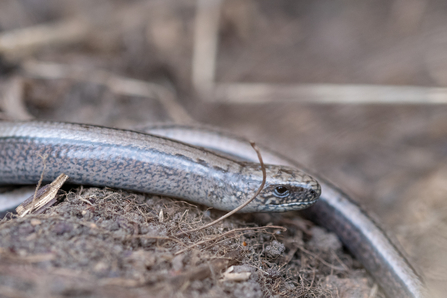
©Joshua Copping - Slow worm
The Slow Worm is Alderney’s only known species of lizard, and has been the subject of a number of dedicated island surveys, 2019 results found here. In appearance the Slow Worm can be said to resemble a snake, as it does not have legs, but unlike snakes the Slow Worm has eyelids and does not have a forked tongue.
This species is sometimes found in garden compost heaps, preferring humid and protected conditions. Slow Worms give birth to live young (often no earlier than June), and hibernate from November to March typically in leaf litter or tree-root crevices. The Vau du Saou Nature Reserve is known to support a number of these creatures and they regularly breed there in spring.
Status in Alderney: Scarce
Status in UK: Protected under Wildlife & Countryside Act 1981, Species of Concern
Status Worldwide (IUCN Red List and Population Trend): Least concern; Stable

